Contemporary distribution and abundance of larval cisco in Lake Michigan
Contributing Authors
Madison Ellenbecker (FWS, madison_ellenbecker@fws.gov); Ben Breaker (FWS), Amanda Ackiss (USGS), Cory Bran (USGS), Ralph Tingley (USGS), Chris Hessel (Grand Traverse Bay Band Natural Resource Department); Erik Olsen (Grand Traverse Bay Band Natural Resource Department); Gary Michaud (Little Traverse Bay Band Natural Resource Department); Katherine Skubik (Little Traverse Bay Band Natural Resource Department); Christina VanDoornik (Little River Band Natural Resource Department); Steve Pothoven (NOAA)
Project Description
Restoration of cisco (Coregonus artedi) in the Laurentian Great Lakes, including Lake Michigan is of high priority. Populations of cisco collapsed in Lake Michigan in the mid-1900's due to interactions with non-native species, habitat degradation, and overfishing (Rook et al. 2023). These impediments may be subsiding, and recent evidence from recreational, commercial, and fishery independent surveys suggest a remnant population of cisco in Grand Traverse Bay is expanding (Claramunt et al. 2019). Fall spawn surveys conducted in Grand Traverse Bay also indicated significant increases in CPUE of adult cisco from 2007-2017 (Claramunt et al. 2019). Subsequently, larval cisco have been collected in areas within and around Grand Traverse Bay, with the highest densities occurring at Elk Rapids (Cubbage et al. 2024). However, the extent to which cisco have expanded their distribution, and achieved progress towards rehabilitation in Lake Michigan, remains unclear.
Contemporary observations of adult and larval cisco in Grand Traverse Bay are consistent with those from Lake Ontario, which indicate embayments are important sites of cisco production (Brown et al. 2021). Our sampling strategy will include embayments (Grand Traverse Bay and Green Bay), as well as sites identified as historic sources of cisco production (Goodyear et al. 1982). Further, we will employ beach sampling, as previous work in Lake Huron suggests the highest density of coregonine larvae, including cisco, occur in beach samples (~1m depth), as opposed to nearshore or offshore samples (Cory Brant, personal comm.).
